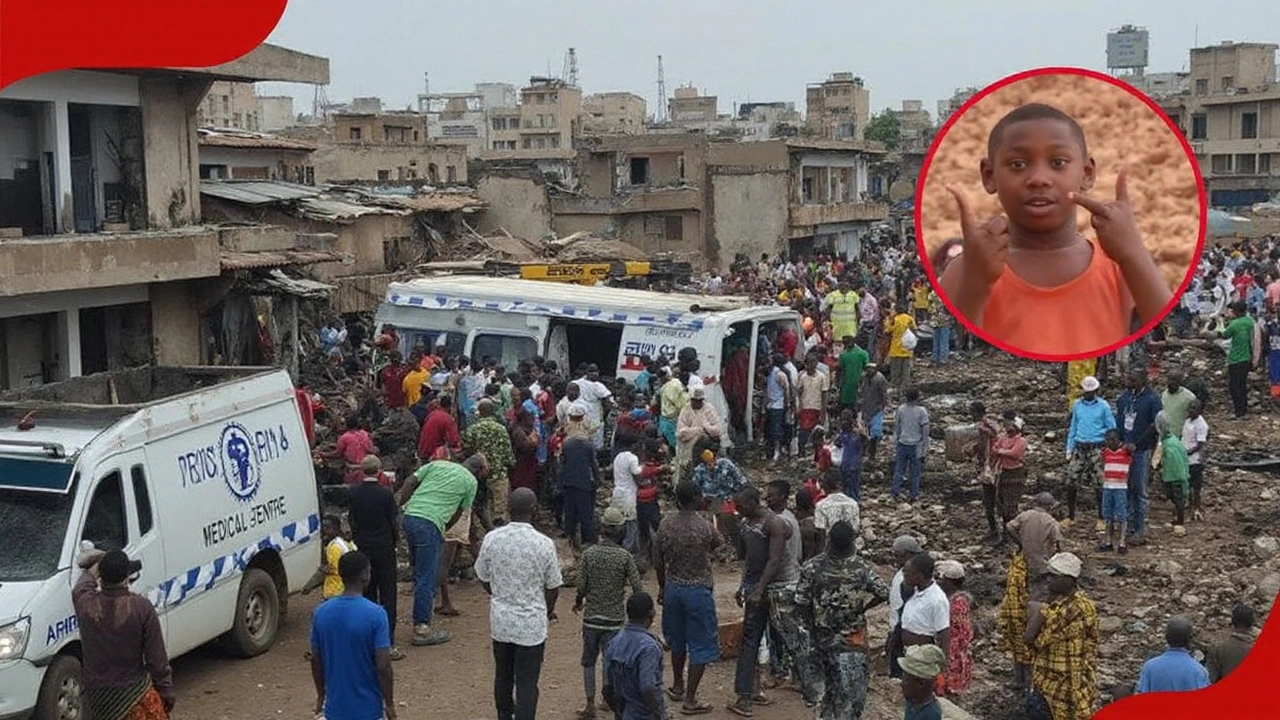Mid-Air Disaster Shakes Mwihoko Community
People in Mwihoko, a bustling area in Kiambu County, are still reeling from the shocking AMREF air ambulance crash of August 7, 2025. The aircraft, a Cessna Citation XLS, had barely lifted from Wilson Airport when disaster struck. Destined for Hargeisa in Somalia, it broke apart over residential streets, sending flames and debris through the heart of the neighborhood.
Eyewitness accounts paint a scene straight out of a nightmare. Residents on the ground barely had time to register the roaring sound overhead before an ear-splitting bang shattered the calm. “It was like the sky ripped open,” one local said. The plane was soon engulfed in fire, with pieces raining onto homes and power lines. In seconds, houses were torn open and a section of the neighborhood faded into darkness after electrical lines ripped free.
The impact was cruel and random. Four people inside the plane—two seasoned pilots and two medical professionals—perished instantly. On the ground, two innocent residents lost their lives when debris crashed through their walls. In total, 22 families now face varying degrees of damage, from lost walls to destroyed belongings. Children and adults alike scrambled for cover as burning fragments landed all around them. Many who rushed to help described bodies and wreckage scattered with no warning or mercy.
Search for Answers and Renewed Safety Fears
Emergency services, led by the Kenya Red Cross and local police, moved swiftly to cordon off the area and provide relief. Within hours, teams were sifting through the smoldering remains, carefully gathering evidence and helping the traumatized residents. The search uncovered a key piece—the flight’s black box recorder, a device expected to provide some explanation for why the plane catastrophically broke up mid-air.
Leaders like Kiambu Governor Kimani Wamatangi and County Commissioner Henry Wafula showed up early, offering condolences and urgently promising new measures. They confirmed that the lost crew included some of Kenya’s best-trained medical staff. AMREF’s CEO, Stephen Gitau, defended their planes’ safety standards, calling the event a tragic outlier—but locals could barely hide their unease, especially with memories of previous air disasters in Nairobi’s Eastleigh and Nyayo High Rise zones.
Theories are everywhere: engine failure, sudden mechanical defect, maybe more. Experts will spend weeks picking through debris and sifting data from the black box. AMREF has pleaded with residents to resist taking debris, warning that every scrap might offer a clue.
This disaster has already reignited a bigger debate about the risks of flying over residential zones, especially as more air traffic moves through Nairobi’s crowded suburbs. The Mwihoko tragedy joins a growing list of Kenyan accidents touching everyday lives—reminding everyone that aviation safety, especially near homes, is not an abstract issue but a painfully urgent one.
- AMREF plane crash leaves six dead, including top medical talent
- 32 homes damaged or affected in seconds
- Flight data recorder offers hope for answers and change
- Previous incidents highlight the dangers of flying over suburbs

